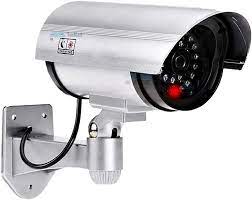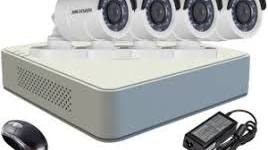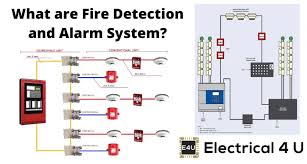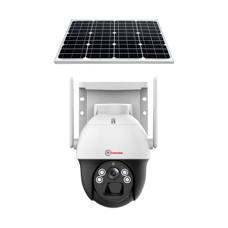Surveillance Camera: Enhancing Security and Peace of Mind
In today’s rapidly evolving world, security has become a top priority for individuals and businesses alike. With the rise in criminal activities, it has become essential to implement effective security measures to protect our loved ones and valuable assets. One such measure that has gained immense popularity is the surveillance camera.
A surveillance camera, also known as a closed-circuit television (CCTV) camera, is a device that captures and records video footage of a specific area or premises. These cameras are strategically placed in key locations to monitor activities and deter potential threats. Whether it’s your home, office, or public spaces, surveillance cameras offer numerous benefits that go beyond just capturing evidence.
Enhanced Security: The primary purpose of surveillance cameras is to enhance security. By installing cameras in vulnerable areas, you can deter criminals from committing crimes. The mere presence of visible cameras acts as a deterrent, making potential wrongdoers think twice before engaging in any illicit activities. Moreover, in the event of an incident, the recorded footage can be used as evidence for investigation and prosecution.
Crime Prevention: Surveillance cameras play a crucial role in preventing crimes from happening in the first place. When people know they are being monitored, they are less likely to engage in illegal activities such as theft, vandalism, or trespassing. This not only protects your property but also contributes to creating safer communities.
Remote Monitoring: One of the significant advancements in surveillance technology is remote monitoring capabilities. With internet connectivity and mobile applications, you can now access live feeds from your surveillance cameras anytime and anywhere. Whether you are at work or on vacation, you can keep an eye on your premises remotely through your smartphone or computer. This feature provides convenience and peace of mind by allowing you to stay connected with your property at all times.
Employee Productivity: Surveillance cameras are not only beneficial for security purposes but also for monitoring employee productivity. In a business setting, cameras can help ensure that employees are adhering to company policies, following safety protocols, and maintaining productivity levels. This can promote a more disciplined work environment and discourage any misconduct.
Evidence Collection: In the unfortunate event of a crime or incident, surveillance cameras act as valuable sources of evidence. The recorded footage can provide crucial information about the sequence of events, identify perpetrators or suspects, and aid in investigations. This evidence can be presented in court to support legal proceedings, increasing the chances of successful prosecution.
Public Safety: Surveillance cameras are not limited to private properties; they also play a vital role in public safety. They are extensively used in public spaces such as streets, parks, shopping malls, and transportation hubs to monitor activities and ensure the safety of citizens. By monitoring public areas, authorities can quickly respond to emergencies or suspicious activities, making communities safer for everyone.
Privacy Considerations: While surveillance cameras offer undeniable benefits, it is essential to strike a balance between security and privacy. It is crucial to install cameras in appropriate locations that do not infringe upon individuals’ privacy rights. Clear signage should be displayed to inform people about the presence of surveillance cameras.
In conclusion, surveillance cameras have become an integral part of modern security systems. They provide enhanced security measures by deterring potential criminals, preventing crimes, and collecting valuable evidence. With advancements in technology, remote monitoring capabilities have made it easier than ever to keep an eye on your property from anywhere. However, it is important to use surveillance cameras responsibly while respecting privacy considerations. By implementing surveillance camera systems effectively, we can create safer environments for ourselves and our communities while enjoying peace of mind.
5 Essential Tips for Securing Your Surveillance Cameras
- Ensure that your surveillance cameras are placed in secure locations to prevent tampering or theft.
- Regularly review and update the security settings of your surveillance cameras to ensure they remain secure.
- Make sure your surveillance cameras are connected to a secure network with strong encryption protocols.
- Consider using motion-sensing technology for more efficient monitoring of areas being monitored by the camera system.
- Use a combination of indoor and outdoor cameras to provide complete coverage of an area or building you wish to monitor with the camera system.
Ensure that your surveillance cameras are placed in secure locations to prevent tampering or theft.
Securing Your Surveillance Cameras: Preventing Tampering and Theft
When it comes to surveillance cameras, ensuring their effectiveness goes beyond just installing them in strategic locations. It is equally important to consider the security of the cameras themselves. After all, these devices play a crucial role in safeguarding your property and providing valuable evidence. To maximize their functionality, it is essential to ensure that your surveillance cameras are placed in secure locations to prevent tampering or theft.
Tampering with or stealing surveillance cameras can have severe consequences. Not only does it compromise the security of your premises, but it also hinders the camera’s ability to capture critical footage when needed most. To avoid such setbacks, here are some key tips to keep in mind:
- Strategic Placement: When deciding where to install your surveillance cameras, choose locations that are not easily accessible or visible to potential intruders. Mount them at a height that makes it difficult for unauthorized individuals to reach or tamper with them. Additionally, consider placing them in areas with good lighting for better visibility and deterrence.
- Protective Housing: Opt for surveillance cameras that come with sturdy and tamper-resistant housing options. These protective enclosures provide an extra layer of security and make it harder for anyone attempting to interfere with the camera’s functionality or steal it.
- Concealment: If possible, hide your surveillance cameras from plain sight while still maintaining their effectiveness. This can be achieved by discreetly mounting them behind objects such as foliage or within inconspicuous fixtures like dummy housings or dome covers.
- Secure Mounting: Ensure that your surveillance cameras are securely mounted using appropriate brackets or mounts designed specifically for the camera model. This helps prevent unauthorized removal and minimizes the risk of tampering.
- Locking Mechanisms: Consider using locking mechanisms for camera enclosures or housings, which require special tools or keys to access the camera’s inner components. These mechanisms can act as a deterrent and make it significantly more challenging for potential thieves or vandals to interfere with the camera.
- Regular Maintenance: Conduct routine inspections of your surveillance cameras to check for any signs of tampering or damage. Ensure that all connections, cables, and mounting brackets are secure and intact. Promptly address any issues to maintain the cameras’ functionality and effectiveness.
By implementing these measures, you can significantly reduce the risk of tampering or theft of your surveillance cameras. Remember that their proper placement and security contribute to their ability to capture clear footage and provide reliable security coverage. Protecting your surveillance cameras ensures that they remain a valuable asset in safeguarding your property, enhancing security, and maintaining peace of mind.
Regularly review and update the security settings of your surveillance cameras to ensure they remain secure.
Regularly Review and Update: Ensuring the Security of Your Surveillance Cameras
When it comes to the security of your premises, surveillance cameras play a vital role in keeping a watchful eye on your property. However, it’s not enough to simply install cameras and forget about them. To maximize their effectiveness and maintain a secure environment, it is crucial to regularly review and update the security settings of your surveillance cameras.
Technology is constantly evolving, and so are the methods used by potential intruders or hackers to exploit vulnerabilities in security systems. By staying proactive and vigilant, you can minimize the risk of unauthorized access to your camera feeds or tampering with your surveillance system. Here are some key reasons why regularly reviewing and updating security settings is essential:
Protection Against Cyber Threats: In today’s digital age, cyber threats are a real concern for any connected device, including surveillance cameras. Hackers can exploit security loopholes in outdated firmware or software versions to gain unauthorized access to camera feeds or even take control of the entire system. Regularly reviewing and updating security settings ensures that you have the latest patches and safeguards against potential vulnerabilities.
Preventing Unauthorized Access: Surveillance cameras are meant to enhance security, but they can become a liability if not properly secured. By reviewing and updating security settings, you can strengthen access controls by setting strong passwords for camera logins, enabling two-factor authentication where available, and limiting user privileges. This prevents unauthorized individuals from gaining access to your camera system.
Optimizing Camera Performance: Over time, software updates may bring new features or performance enhancements that can improve the overall functionality of your surveillance cameras. By regularly reviewing and updating security settings, you ensure that you’re benefiting from these updates, which might include improved video quality, advanced motion detection algorithms, or enhanced remote monitoring capabilities. Keeping up with these updates ensures that your cameras are operating at their full potential.
Adapting to Changing Security Needs: As your security needs evolve, so should your surveillance camera settings. Regularly reviewing and updating security settings allows you to adapt to changing circumstances. For example, if you’ve reconfigured your premises or added new areas that require monitoring, you can adjust camera angles, motion detection zones, or recording schedules accordingly. This ensures that your cameras are optimized for capturing the most critical areas and events.
Maintaining Compliance: Depending on your industry or location, there may be specific regulations or compliance requirements related to surveillance camera systems. Regularly reviewing and updating security settings helps ensure that you remain compliant with these regulations. This is particularly important in sectors such as healthcare, finance, or government where privacy and data protection laws are stringent.
In conclusion, regularly reviewing and updating the security settings of your surveillance cameras is essential for maintaining a secure environment. By staying proactive and vigilant, you can protect against cyber threats, prevent unauthorized access, optimize camera performance, adapt to changing security needs, and maintain compliance with relevant regulations. Remember that technology is constantly evolving, so it’s crucial to stay up-to-date with the latest firmware updates and security patches provided by the camera manufacturer. By doing so, you can ensure that your surveillance cameras continue to serve their purpose effectively while providing peace of mind for yourself and those under your protection.
Make sure your surveillance cameras are connected to a secure network with strong encryption protocols.
Securing Your Surveillance Cameras: The Importance of a Strong Network Connection
When it comes to ensuring the effectiveness of your surveillance camera system, one crucial aspect often overlooked is the security of your network connection. Connecting your cameras to a secure network with strong encryption protocols is paramount in safeguarding your data and maintaining the integrity of your surveillance system.
Why is a secure network connection so important? Let’s delve into a few key reasons:
Protection against unauthorized access: A strong network connection with robust encryption protocols acts as a barrier against unauthorized access to your surveillance cameras. Without proper security measures in place, hackers can potentially intercept and manipulate the video feed, compromising the integrity of your system. By implementing strong encryption protocols, you significantly reduce the risk of unauthorized individuals gaining access to your cameras and footage.
Safeguarding sensitive information: Surveillance cameras often capture sensitive information, such as footage from inside homes, offices, or public spaces. This data needs to be protected from prying eyes and potential misuse. A secure network connection ensures that the video feed remains encrypted and can only be accessed by authorized individuals with proper authentication credentials.
Preventing tampering or alteration: In addition to protecting against unauthorized access, a secure network connection also helps prevent tampering or alteration of video footage. When connected to an encrypted network, any attempts at tampering with the data will be more challenging for malicious actors as they would require decryption keys that are securely stored within authorized devices.
Mitigating cybersecurity risks: Cybersecurity threats are constantly evolving, and it’s essential to stay one step ahead in protecting your surveillance system from potential vulnerabilities. By connecting your cameras to a secure network with strong encryption protocols, you minimize the risk of falling victim to cyber attacks such as hacking attempts or data breaches.
To ensure that your surveillance cameras are connected to a secure network with strong encryption protocols, consider implementing these practices:
Use WPA2 or WPA3 encryption: When setting up your network, opt for the latest encryption protocols such as WPA2 or WPA3. These protocols provide robust security and are more resistant to hacking attempts compared to older encryption methods.
Change default passwords: It is crucial to change the default passwords on your cameras and network devices. Weak or easily guessable passwords can make it easier for unauthorized individuals to gain access to your system.
Regularly update firmware: Keep your surveillance camera system up to date by regularly installing firmware updates provided by the manufacturer. These updates often include security patches that address vulnerabilities and enhance the overall security of your system.
Utilize a virtual private network (VPN): Consider using a VPN when accessing your surveillance cameras remotely. A VPN creates a secure, encrypted connection between your device and the network, adding an extra layer of protection.
By prioritizing a secure network connection for your surveillance cameras, you can ensure that your system remains protected against unauthorized access, data breaches, and tampering attempts. Taking these proactive measures will help you maintain the integrity of your surveillance system and provide peace of mind knowing that your data is secure.
Consider using motion-sensing technology for more efficient monitoring of areas being monitored by the camera system.
Consider using motion-sensing technology for more efficient monitoring of areas being covered by your surveillance camera system.
When it comes to surveillance camera systems, one of the key challenges is managing and reviewing vast amounts of video footage. Constantly monitoring hours of footage can be time-consuming and overwhelming. However, by incorporating motion-sensing technology into your camera system, you can significantly improve its efficiency and effectiveness.
Motion-sensing technology works by detecting any movement within the camera’s field of view. When motion is detected, the camera is triggered to start recording or send an alert to the designated monitoring station or device. This feature eliminates the need to continuously record static scenes, saving storage space and making it easier to review relevant footage.
By using motion-sensing technology, you can focus on capturing critical events rather than sifting through hours of uneventful footage. This not only simplifies the task of monitoring but also allows for quicker identification of suspicious or unusual activities.
Moreover, motion-sensing technology can help conserve power in battery-operated cameras. Instead of running continuously, these cameras can activate only when motion is detected, extending their battery life and reducing maintenance requirements.
When implementing motion-sensing technology, it’s important to consider factors such as sensitivity levels and detection zones. Adjusting sensitivity levels ensures that the camera detects genuine movements while minimizing false alarms triggered by insignificant motions like tree branches swaying in the wind.
Defining specific detection zones is also crucial for efficient monitoring. By setting up virtual boundaries within the camera’s field of view, you can focus on monitoring specific areas where movement is most likely to occur. This helps in avoiding unnecessary recordings triggered by movements outside the intended coverage area.
In summary, incorporating motion-sensing technology into your surveillance camera system offers several advantages. It improves efficiency by reducing unnecessary recording and simplifying video review processes. It also helps conserve power in battery-operated cameras. By adjusting sensitivity levels and defining detection zones appropriately, you can ensure accurate and reliable motion detection. So, consider utilizing motion-sensing technology to enhance the effectiveness of your surveillance camera system and streamline your security monitoring efforts.
Use a combination of indoor and outdoor cameras to provide complete coverage of an area or building you wish to monitor with the camera system.
Complete Coverage: The Power of Indoor and Outdoor Surveillance Cameras
When it comes to securing your property, having a comprehensive surveillance camera system is essential. To achieve complete coverage and maximize the effectiveness of your security measures, it is advisable to use a combination of indoor and outdoor cameras. By strategically placing cameras both inside and outside the area or building you wish to monitor, you can ensure that no blind spots are left unchecked.
Indoor cameras are designed to monitor the interior spaces of your property. Whether it’s your home, office, or retail store, indoor cameras offer a close-up view of what’s happening inside. These cameras are ideal for monitoring entrances, hallways, common areas, and rooms where valuable assets are kept. With high-resolution imagery and wide-angle lenses, indoor cameras capture clear footage that can be crucial in identifying intruders or documenting any suspicious activities.
On the other hand, outdoor cameras are specifically built to withstand harsh weather conditions while monitoring the exterior surroundings of your property. These cameras provide a wider field of view and are effective in capturing activities around entry points such as doors, windows, driveways, parking lots, or any vulnerable outdoor areas. Outdoor cameras act as a strong deterrent against potential intruders by making them aware that their actions are being recorded.
By combining both indoor and outdoor surveillance cameras in your security system, you create a powerful network that leaves no room for blind spots. This comprehensive coverage ensures that every corner of your property is monitored effectively.
The benefits of using a combination of indoor and outdoor surveillance cameras extend beyond just security. For instance:
- Enhanced Safety: Indoor cameras allow you to keep an eye on vulnerable areas within your property like staircases or children’s playrooms. Outdoor cameras can help monitor potential hazards such as swimming pools or construction zones.
- Employee Monitoring: Indoor cameras enable employers to observe employee behavior and adherence to workplace rules while outdoor cameras can track activities in parking lots or loading docks, ensuring safety protocols are followed.
- Remote Monitoring: With the ability to access live feeds remotely, you can keep an eye on both indoor and outdoor spaces from anywhere. This feature provides convenience and peace of mind, especially when you’re away from your property.
- Evidence Collection: By combining indoor and outdoor cameras, you increase the chances of capturing crucial evidence in case of incidents or crimes. Having a complete record of activities inside and outside your property strengthens your ability to identify culprits or provide evidence for legal proceedings.
When installing a surveillance camera system, it is important to consider the layout and specific security needs of your property. Assess the areas that require monitoring both indoors and outdoors, and strategically position cameras accordingly. Opt for high-quality cameras with features like night vision, motion detection, and remote access to maximize their effectiveness.
Remember that proper signage should be displayed to inform individuals about the presence of surveillance cameras while respecting privacy considerations.
By using a combination of indoor and outdoor surveillance cameras, you can achieve complete coverage of your property, ensuring that every angle is captured. This comprehensive approach not only enhances security but also promotes safety, employee accountability, and peace of mind.




